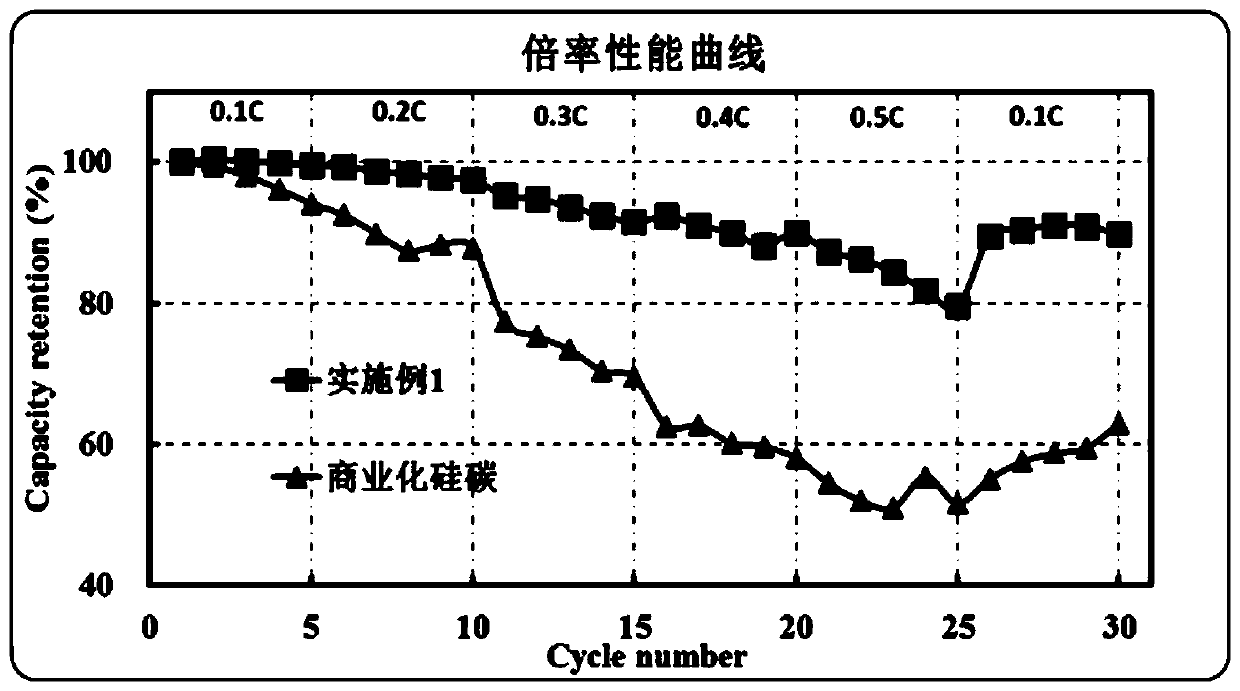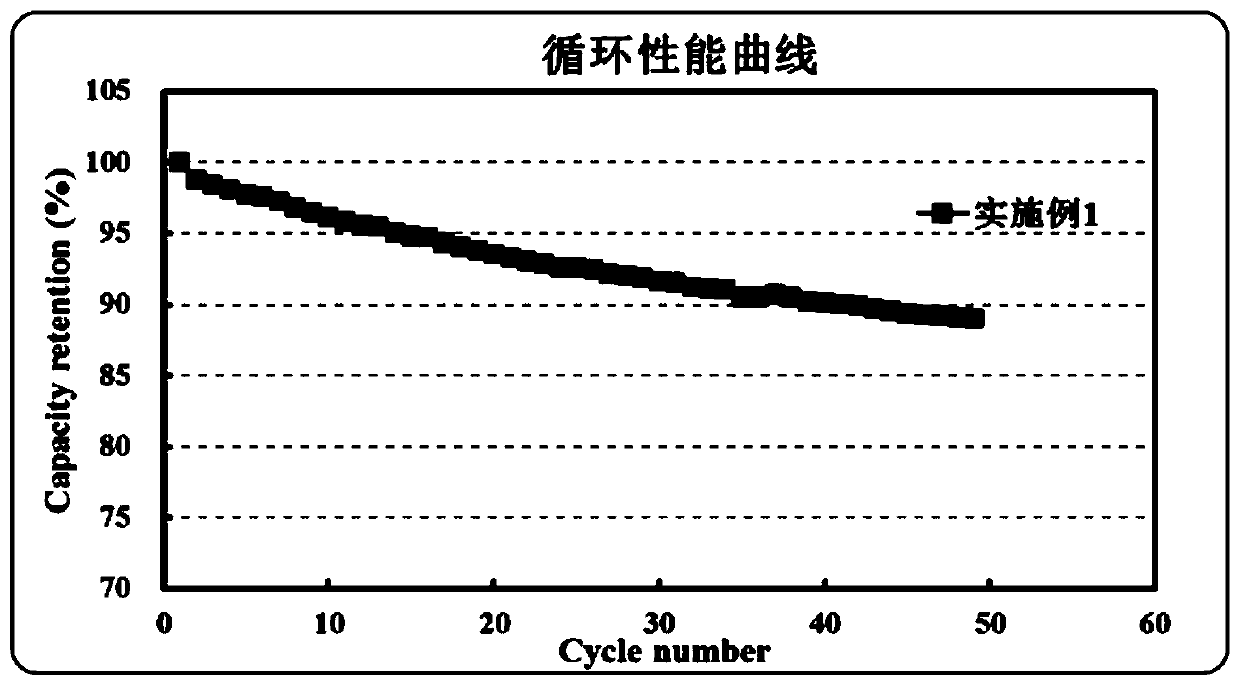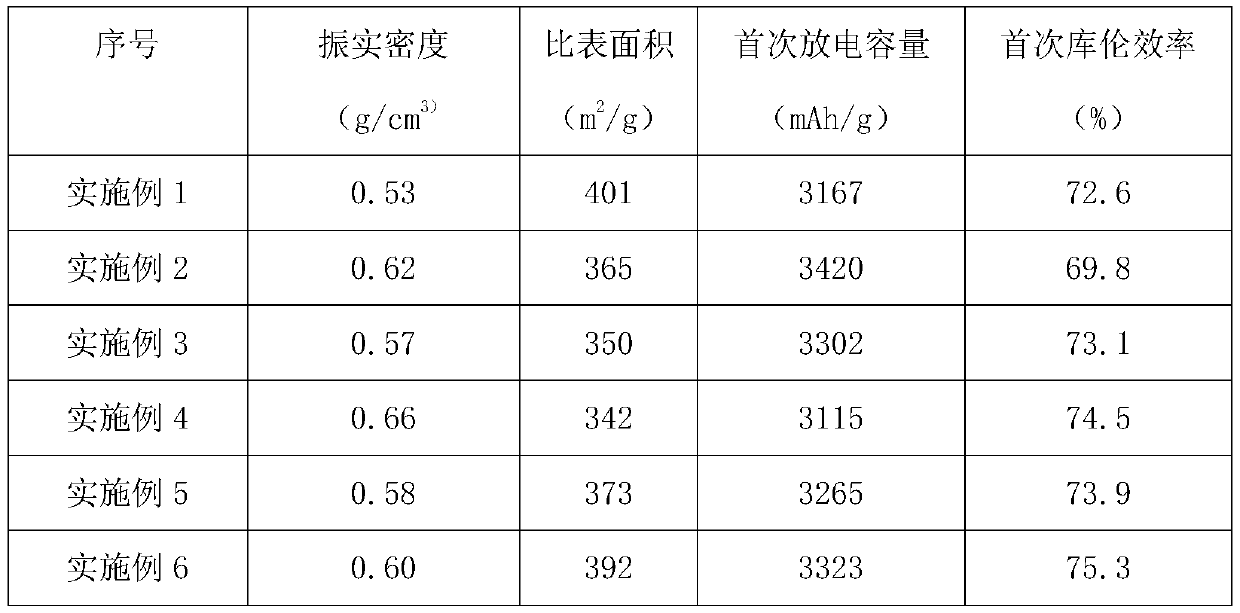Preparation method of rate-type lithium ion battery silicon composite oxide material
A technology of lithium-ion batteries and composite oxides, applied in battery electrodes, secondary batteries, electrochemical generators, etc., can solve the problems of inability to charge and discharge large currents, difficulty in making breakthroughs, small self-discharge, etc., and achieve the reduction of irreversible lithium The generation of oxygen compounds, the improvement of the first charge and discharge efficiency, and the effect of excellent rate performance
- Summary
- Abstract
- Description
- Claims
- Application Information
AI Technical Summary
Problems solved by technology
Method used
Image
Examples
preparation example Construction
[0024] The preparation method of the rate type lithium ion battery silicon composite oxide material according to the present invention comprises the following steps,
[0025] (1) Dispersion: Add 0.75-10g surfactant to 10-100mL deionized water, ultrasonically disperse for 1-2h to form a uniform mixture, then add 1.2-7g carbon nanotubes to the uniform mixture, ultrasonically disperse for 2- After 3h, a uniform carbon nanotube dispersion is formed; wherein, the surfactant is one of sodium dodecylbenzenesulfonate, sodium octadecyl sulfate, quaternary ammonium compound, lecithin, fatty acid glyceride ;
[0026] (2) Coating: add 5-10mL carbon nanotube dispersion liquid to 50-500mL ethanol solution, ultrasonically disperse for 1 hour, then add 2-20mL concentrated ammonia water, continue to stir to form a uniform solution, then add 5-20mL drop by drop to a concentration of 80% tetraethyl orthosilicate, stirred and reacted at room temperature for 0.5-10h, washed with deionized water a...
Embodiment 1
[0032] (1) 0.75g of sodium octadecyl sulfate is added to 50ml of deionized water, and a 300W supersonic dispersing machine with a power of 2h is used to form a homogeneous solution, and then 1.3g of carbon nanotubes are added to the mixed solution containing the surfactant. A 200W ultrasonic disperser was used to obtain a uniform carbon nanotube dispersion after ultrasonication for 3 hours;
[0033] (2) Take 5mL of the carbon nanotube dispersion in step (1), add it into 80mL of 30% ethanol solution, ultrasonically disperse it for 1h, add 5mL of 25% ammonia water into the solution, stir it evenly, and use dropwise Slowly add 5 mL of tetraethyl orthosilicate with a concentration of 80% dropwise into the tube, stir and react at room temperature for 2 h, after the reaction is completed, wash twice with deionized water and dry in a blast drying oven to obtain silica-coated carbon nanotubes;
[0034] (3) Take 0.15 g of silicon dioxide-coated carbon nanotubes prepared in step (2), u...
Embodiment 2
[0037](1) Add 1.1g of sodium dodecylbenzene sulfonate to 40mL of deionized water, use a power 250W ultrasonic disperser to sonicate for 2 hours to form a uniform solution, and then add 1.2g of carbon nanotubes to the mixed solution containing surfactant , using a power 300W ultrasonic disperser to obtain a uniform carbon nanotube dispersion after ultrasonication for 3 hours;
[0038] (2) Take 9ml of carbon nanotube dispersion and add it to 100mL of 30% ethanol solution, ultrasonically disperse for 100min, add 8mL of 25% ammonia water to the solution, stir evenly, and slowly add 7mL of concentration with a dropper It is 80% tetraethyl orthosilicate, stirred and reacted at room temperature for 6 hours, after the reaction is finished, washed with deionized water for 3 times, and then dried in a blast drying oven to obtain carbon nanotubes coated with silicon dioxide.
[0039] (3) Take 0.12 g of the silicon dioxide-coated carbon nanotubes prepared in step 2, use acetylene as the c...
PUM
| Property | Measurement | Unit |
|---|---|---|
| electric potential / voltage | aaaaa | aaaaa |
Abstract
Description
Claims
Application Information
 Login to View More
Login to View More - R&D
- Intellectual Property
- Life Sciences
- Materials
- Tech Scout
- Unparalleled Data Quality
- Higher Quality Content
- 60% Fewer Hallucinations
Browse by: Latest US Patents, China's latest patents, Technical Efficacy Thesaurus, Application Domain, Technology Topic, Popular Technical Reports.
© 2025 PatSnap. All rights reserved.Legal|Privacy policy|Modern Slavery Act Transparency Statement|Sitemap|About US| Contact US: help@patsnap.com



